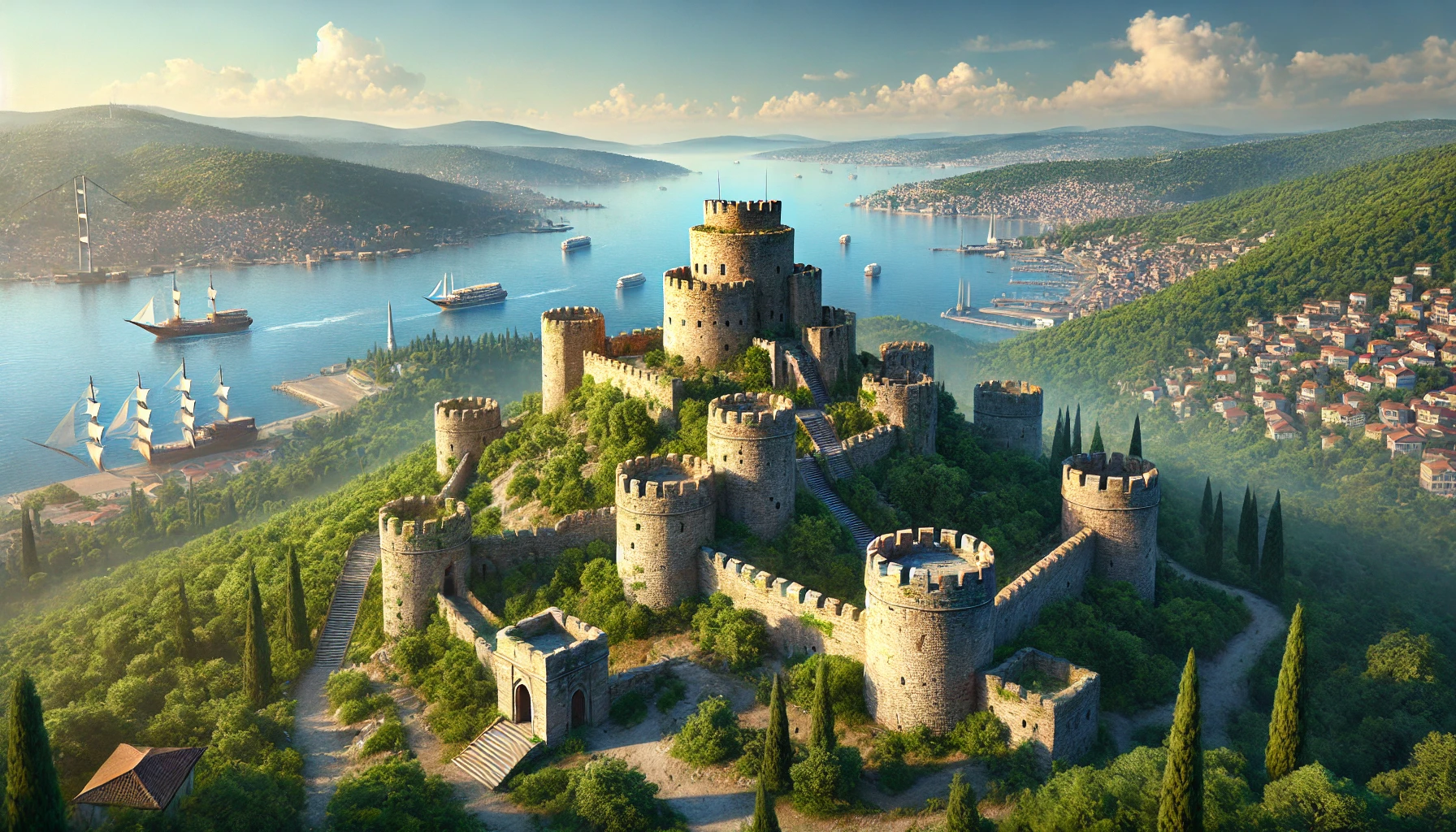Yoros Castle, Istanbul: A Window into Byzantine and Ottoman History
Perched high above the confluence of the Bosphorus and the Black Sea, Yoros Castle stands as a testament to the strategic and historical significance of this region. Also known as the Genoese Castle, this ruined fortress in Istanbul’s Beykoz district offers travel enthusiasts a captivating glimpse into the past. In this article, we’ll explore the rich history, architectural marvels, and the cultural significance of Yoros Castle, providing a comprehensive guide for visitors.
The Strategic Importance of Yoros Castle
Overlooking the Bosphorus and the Black Sea
Yoros Castle is strategically located on a hill overlooking one of the narrowest stretches of the Bosphorus, just north of the small fishing village of Anadolu Kavağı. This prime location allowed its various occupants to control maritime traffic and defend the entrance to the Bosphorus from the Black Sea.
Early Settlers and Historical Significance
The site of Yoros Castle was originally settled by Phoenicians and Greeks due to its strategic and commercial advantages. The Greeks called the area Hieron, meaning Sacred Place. Remains of ancient temples dedicated to various gods, including Zeus Ourios, have been discovered here, underscoring the site’s historical importance long before the construction of the castle.
The Rich History of Yoros Castle
Byzantine and Genoese Control
Yoros Castle was intermittently occupied throughout the Byzantine Empire. It gained significant importance under the Palaiologos dynasty, which fortified it heavily. The Byzantines, Genoese, and Ottomans fought over the castle for centuries due to its strategic value. It was first captured by Ottoman forces in 1305 but was retaken by the Byzantines shortly afterward.
Ottoman Fortification and the Genoese Period
In 1391, Sultan Bayezid I captured Yoros Castle as part of his preparations for the siege of Constantinople. The fortress was used as a base during the construction of Anadolu Hisarı, a critical fortification on the Asian side of the Bosphorus. In 1414, the Genoese took control of Yoros Castle, which they held until Sultan Mehmed II’s conquest of Constantinople in 1453.
Mehmed II and Subsequent Ottoman Enhancements
After the conquest of Constantinople, Mehmed II refortified Yoros Castle, adding a customs office, quarantine center, and checkpoint. The castle was further enhanced by Bayezid II and later fortified by Murad IV and Osman III to protect against Cossack raids. The castle gradually fell into disrepair after the 18th century.
Architectural Marvels of Yoros Castle
The Fortress Structure
Yoros Castle features imposing walls and towers, with the main entrance and several other gates still standing. The ruins of the citadel and surrounding walls offer a glimpse into the architectural prowess of its builders. The castle’s elevated position provides stunning views of the Bosphorus and the Black Sea, making it a picturesque site for visitors.
Greek Inscriptions and Byzantine Symbols
Greek inscriptions and symbols of the Palaiologos family, the last ruling dynasty of Byzantium, remain carved into the walls of Yoros Castle. These historical remnants offer a tangible connection to the castle’s Byzantine past and its significance in the region’s history.
Visiting Yoros Castle Today
A Popular Day Trip Destination
Yoros Castle and the village of Anadolu Kavağı are popular day trip destinations from central Istanbul. Visitors can enjoy a scenic ferry ride along the Bosphorus to Anadolu Kavağı, followed by a hike or a short bus ride up to the castle. The journey itself is an experience, offering breathtaking views of the Bosphorus and the surrounding landscapes.
Exploring the Ruins
Visitors to Yoros Castle can explore the ruins of the fortress, including the main entrance, citadel walls, and various towers. The site offers a unique opportunity to walk through history, imagining the lives of those who once defended this strategic stronghold.
Practical Information for Visitors
Yoros Castle is open to the public, although parts of the surrounding area are controlled by the Turkish military and are not accessible. It’s advisable to check for any restrictions or guided tour options before planning your visit. The best time to visit is during the spring and autumn months when the weather is mild and the views are particularly stunning.
The Cultural and Historical Significance of Yoros Castle
A Symbol of Strategic Importance
Yoros Castle represents the strategic importance of controlling the Bosphorus and the Black Sea throughout history. Its various occupants, from the Phoenicians and Greeks to the Byzantines, Genoese, and Ottomans, all recognized its value in controlling maritime routes and defending territories.
Preservation and Excavation Efforts
Recent excavations and preservation efforts have helped to maintain the ruins of Yoros Castle, allowing visitors to appreciate its historical significance. These efforts ensure that the castle remains a symbol of Istanbul’s rich and diverse heritage.
Conclusion: Discovering the Legacy of Yoros Castle
Yoros Castle offers a captivating journey through history, from its ancient Greek roots to its significance in the Byzantine and Ottoman periods. Its strategic location, architectural marvels, and rich history make it a must-visit destination for history enthusiasts and travelers exploring Istanbul.
For more information on planning your visit to this historic landmark and exploring other fascinating destinations in Turkey, check out Travel Turkey. Embrace the legacy of Yoros Castle and uncover the wonders of Istanbul’s past and present.
Latest Update: Aug 5, 2024
Your Content Goes Here
TAGS: Anadolu Kavağı, Black Sea, Bosphorus, Byzantine history, castle ruins, Genoese Castle, Greek inscriptions, historical landmarks, Istanbul, Ottoman fortifications, Ottoman history, Palaiologos dynasty, strategic fortress, travel Istanbul, Yoros Castle
A brief summary of the key points in this article.
Latest Travel Guides
Weather Today in Yoros Castle, Istanbul, Turkey
Location: Istanbul
Temperature: 14.53°C
Condition: Clear sky
















